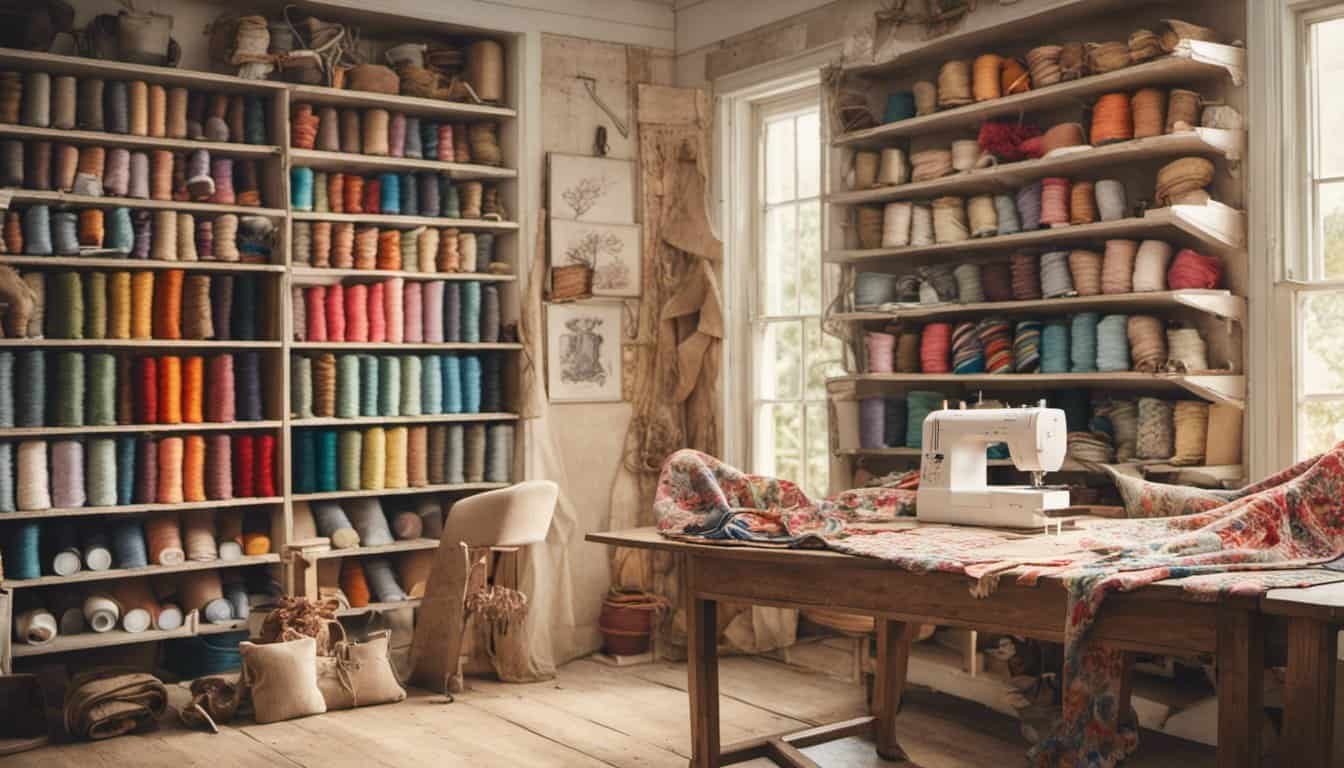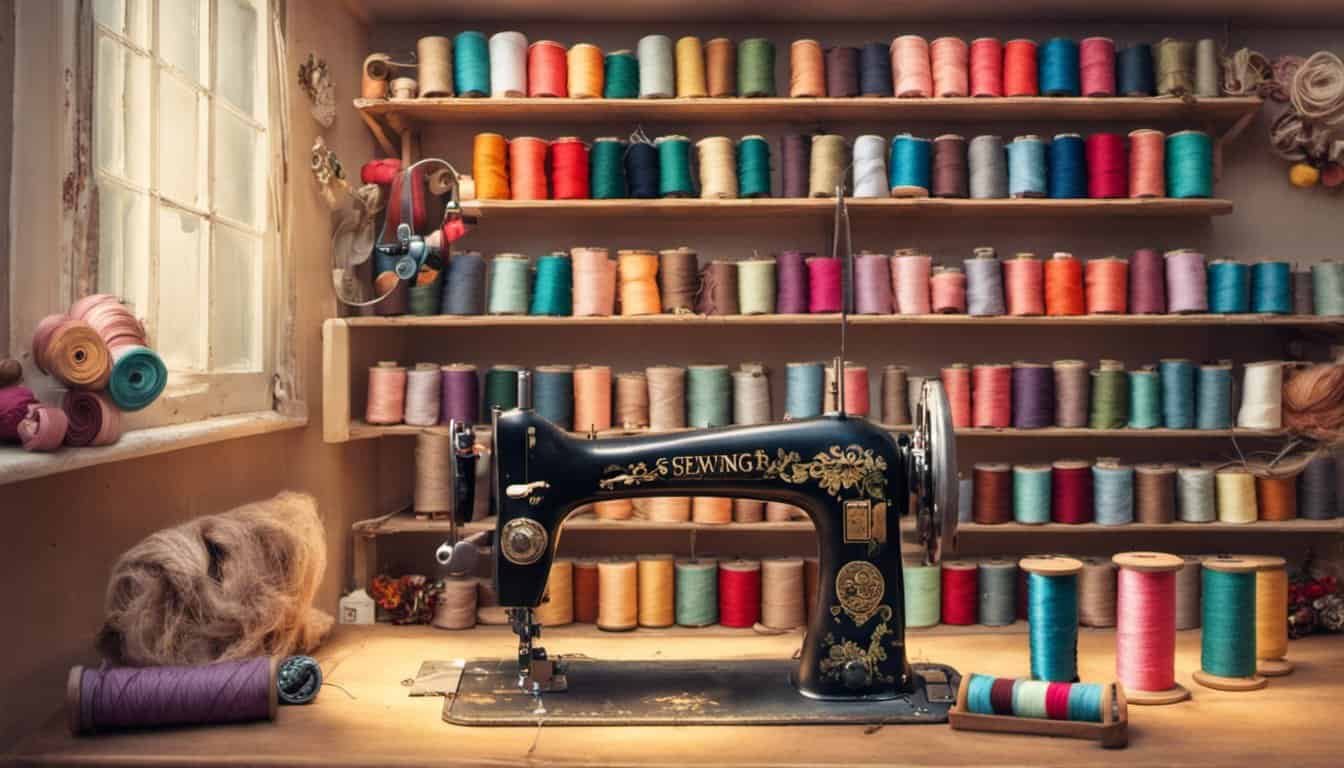Sewing your own curtains is such a rewarding way to add a personal touch to your home. Whether you’re sprucing up a cozy nook or dressing up a large picture window, handmade curtains let you customize the fabric, length, and style to perfectly match your space. Plus, they’re often more budget-friendly than buying ready-made ones.
Choosing the Right Fabric and Tools
Picking the right materials is key to sewing curtains that match your style and fit your windows perfectly. Here’s how I approach fabric selection and tool preparation.
Selecting the Perfect Fabric
I always start by considering the room’s purpose and lighting needs. Lightweight fabrics like sheer voile or muslin are great for letting in natural light, while heavier options like velvet or blackout fabric provide privacy and block light. For spaces like bedrooms or home theaters, blackout fabrics create optimal results.
Patterns and colors also matter. Solids fit minimalist styles, while bold prints make curtains a focal point in the room. I recommend pre-washing the fabric to prevent shrinkage after sewing. Measure your windows carefully before purchasing fabric, adding 2 to 3 extra inches on each side for seams and hemming.
Gathering Essential Sewing Tools
Having all the right tools makes sewing efficient. Essential items I use include:
- Measuring tape: Ensures precise fabric cuts for proper curtain sizing.
- Fabric scissors: Provides clean and accurate cuts.
- Pins or clips: Secure fabric layers while sewing.
- Sewing machine with matching thread: Speeds up the process and adds professional finishing.
- Iron and ironing board: Removes wrinkles and presses hems for clean edges.
- Curtain hardware templates: Allows alignment of grommets or curtain hooks.
For projects with intricate details, I sometimes use a rotary cutter and cutting mat to achieve straight edges. Ensuring all tools are prepared before starting keeps the sewing process stress-free and enjoyable.
Measuring Your Windows
Accurate window measurements ensure perfectly fitted curtains. Proper measurements help avoid fabric waste and ensure the finished product complements your space.
How to Measure Window Dimensions Accurately
I start by measuring the width and height of the window, including the frame if the curtains will fully cover it. For width, I measure from one end of the frame to the other and add 4–8 inches to allow the curtain to extend beyond the frame. For the height, I measure from the top of the frame to the desired curtain length—whether stopping at the sill, apron, or extending to the floor. If installing a curtain rod, I include the rod’s placement in the measurements by starting the height measurement 4–6 inches above the frame.
Double-width allows curtains to gather nicely when closed. To achieve this, I multiply the final width measurement by 2. For larger windows or thicker pleats, I may opt for a multiplier of 2.5 or even 3 based on the look I want.
Calculating Fabric Yardage
To calculate fabric yardage, I divide the required height by 36 to convert to yards. I add an extra 8–12 inches for hemming and header seams. For patterned fabric, I account for pattern repeats. If the repeat is large, I add the repeat length to the total for each panel to ensure the design aligns perfectly when sewn.
For example, a 72” window with floor-length curtains (84”) and a fabric repeat of 12” would require roughly 7 yards for two panels:
84” + 10” (seam and hem) = 94” per panel
94” x 2 panels = 188”
188” ÷ 36 = 5.2 yards
5.2 yards + fabric repeat allowance (12” per panel) = 7 yards
This approach ensures I have enough fabric to create professional-looking curtains, even for windows of unusual dimensions.
Cutting and Preparing the Fabric
Cutting and prepping the fabric ensures clean edges and precise dimensions for your curtains. Skipping this step can result in uneven curtains or poorly finished edges.
Marking and Cutting the Fabric
To mark and cut accurately, I use a flat, uncluttered surface like a large table or clean floor. I choose a fabric pencil or chalk to draw straight, visible lines. Measuring twice and cutting once minimizes errors, especially for patterned fabrics where alignment is key.

I first measure and mark the width and height of each curtain panel, adding allowances for hems and headers. For instance, I include an extra 4 inches for side hems and 6-8 inches for top and bottom hems. I align the edges of the fabric along a cutting mat or tape measure for straight, clean cuts, then use sharp fabric scissors to avoid fraying.
Preparing the Edges and Hems
Preparing the edges involves pressing and folding them for a clean finish. Using an iron, I press the raw edge under by about 1/2 inch, then fold it over again to create a double fold hem. This provides smooth, durable edges that won’t fray over time.
To secure the folds before sewing, I use sewing pins or fabric clips. For lightweight fabrics, I ensure the pin placement doesn’t distort the fabric. In the case of heavyweight fabrics, pressing harder during ironing helps maintain the crisp folds. Preparing all edges—including side hems, bottom hems, and headers—before sewing ensures the fabric is ready for final assembly.
Sewing the Curtain Panels
Sewing the curtain panels brings all your preparation together. This step ensures the fabric transforms into professional, functional curtains.
Assembling the Panels
I start by joining fabric pieces if the window is wider than the fabric’s width. To do this, I align the edges of each piece with their right sides facing inward and pin them together to keep the material in place. I then sew a straight seam using a 1/2-inch seam allowance before pressing the seams open with an iron for a flat, smooth finish. If the curtain requires lining, I repeat the process to assemble the lining panels.
« Making a Fabric Lampshade Cover: Transform Your Living Space with This Easy DIY Project
How to Make a Fabric Doorstop: Easy DIY Tutorial to Add Charm and Function to Your Home »
Once the panels are joined, I layer the main and lining fabrics together with their wrong sides facing each other. I ensure the edges align perfectly before securing them with pins or fabric clips along all sides. Leaving the top edge unpinned allows for attaching the casing later.
Creating the Hem and Top Casing
To create the hem, I fold the fabric’s bottom edge up by 1 inch and press it flat. I fold it again by 2 to 3 inches, depending on the curtain’s style, to form a double-fold hem, then iron to hold the fold. I secure the hem with pins and sew a straight line close to the inner folded edge for a polished finish.
For the top casing, I fold the fabric’s top edge down by 1 inch, pressing it with an iron. I fold it again by 3 inches or wider if using a larger curtain rod, pressing and securing with pins. I sew along the inner folded edge, keeping the fabric straight to create a clean casing. This step ensures the curtain rod slides through smoothly, anchoring the finished curtain in place.
Adding Decorative Features
Decorative features elevate simple curtains, transforming them into stunning design elements in any room. Incorporating these details adds style and character, tailoring the curtains to suit your taste.
Choosing Finishing Touches
Finishing touches enhance curtains’ polished look and align them with the room’s theme. I choose between options like pleats, tiebacks, and grommets, considering the desired style and functionality. Pleats, for example, create a formal appearance and work well for dining rooms or offices. Grommets offer a contemporary vibe and slide easily on curtain rods.

Tiebacks not only add elegance but also provide light and space control. Fabric tiebacks in matching or contrasting colors create a cohesive look, while rope or beaded options introduce texture. Consider how these touches interact with the existing décor before making a decision.
Adding Trim or Decorative Elements
Trims or decorative accents add interest and sophistication to plain curtains. I often sew ribbon, lace, or pom-pom trim along the edges or bottoms of the panels. For an upscale look, metallic or velvet trims provide luxurious detail.
If embroidery fits the style, I embroider designs onto the curtain fabric using floral, geometric, or custom patterns. Appliqués add texture, with options like fabric cutouts or fabric paint creating artistic visuals.
Tassels, available in varying sizes, are another fun addition to draw attention to the curtain sides or valances. For bold results, I layer trims or combine different decorative elements, ensuring they complement the fabric and enhance the overall design.
Hanging and Adjusting the Curtains
Hanging the finished curtains ensures they frame your window beautifully and function effectively. Proper installation and adjustments refine the final look and enhance functionality.

Installing Curtain Rods and Hardware
I recommend selecting curtain rods that complement both the curtain style and room decor. Ensure the rod’s length extends at least 4 to 6 inches beyond each side of the window frame for optimal coverage. Use a level to mark the brackets’ placement, positioning them around 4 to 6 inches above the window frame to give the illusion of taller windows.
After marking, securely fasten the brackets to the wall using screws and wall anchors if necessary. Slide the curtains onto the rod or attach them using hooks, depending on the chosen design, then place the rod onto the brackets. For heavy curtains, confirm the brackets and rods can support the weight.
Tips for Perfectly Adjusted Curtains
Proper adjustments guarantee the curtains hang evenly and open or close smoothly. First, check if the panels touch the floor evenly or hover slightly above, depending on your preferred look. Adjust the rod height if needed to correct length inconsistencies.
Ensure the pleats, folds, or grommets are even across the rod to create a neat appearance. If using tiebacks, position them at equal heights on both sides of the window, typically one-third of the way from the top. For added fullness, gently arrange the fabric by hand, spreading it evenly across the rod.
Conclusion
Sewing your own curtains is such a fulfilling way to bring personality and charm into your home. It gives you complete control over every detail, from fabric choice to the final decorative touches. Plus, there’s nothing quite like the satisfaction of creating something both beautiful and functional with your own hands.

Whether you’re crafting curtains for a cozy nook or a grand window, the process is all about creativity and precision. With the right tools, a little patience, and some thoughtful planning, you’ll end up with curtains that perfectly suit your space and style.
So why not give it a try? The effort you put in will be well worth it when you see your custom curtains hanging proudly in your home. Happy sewing!

















